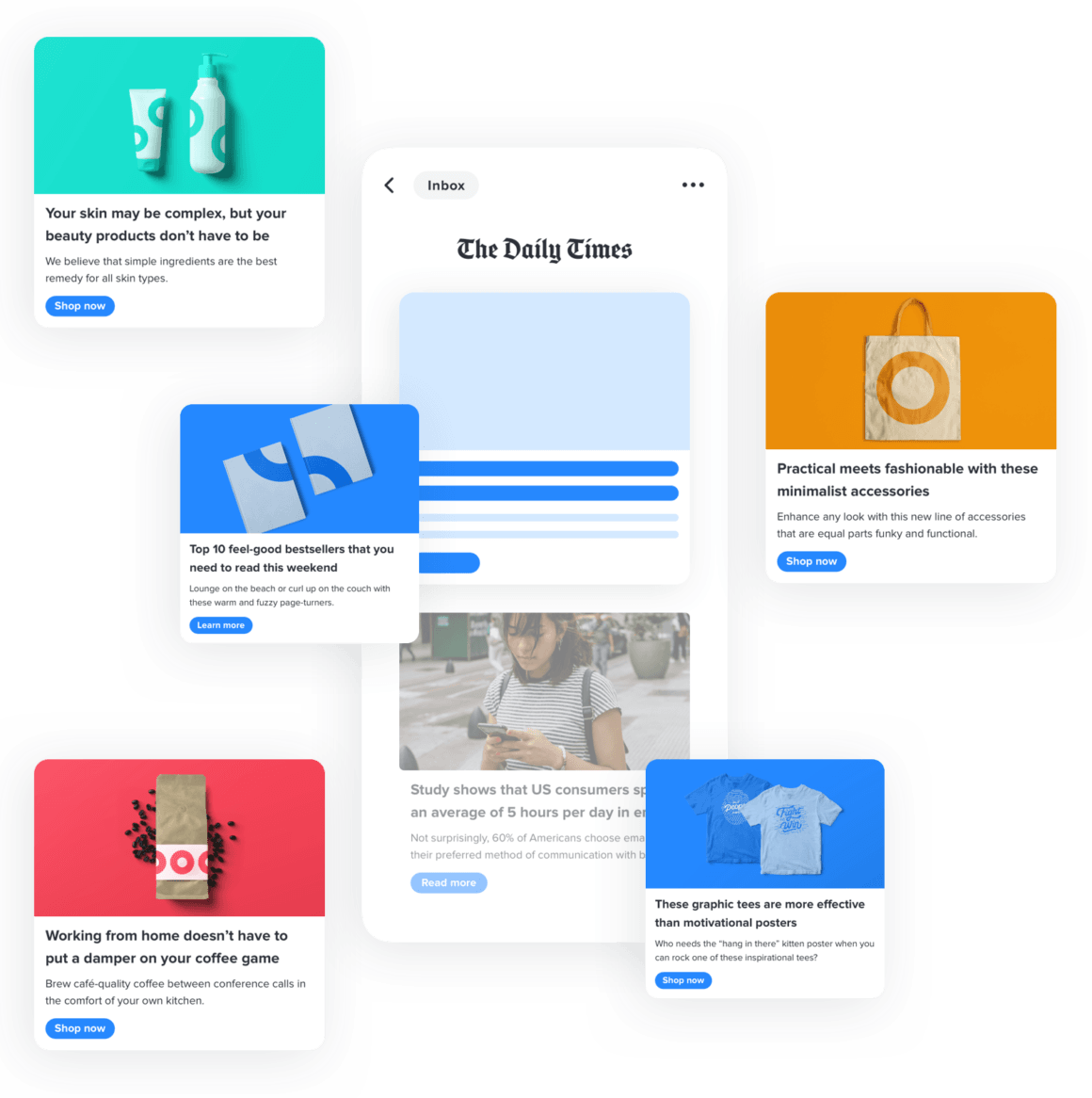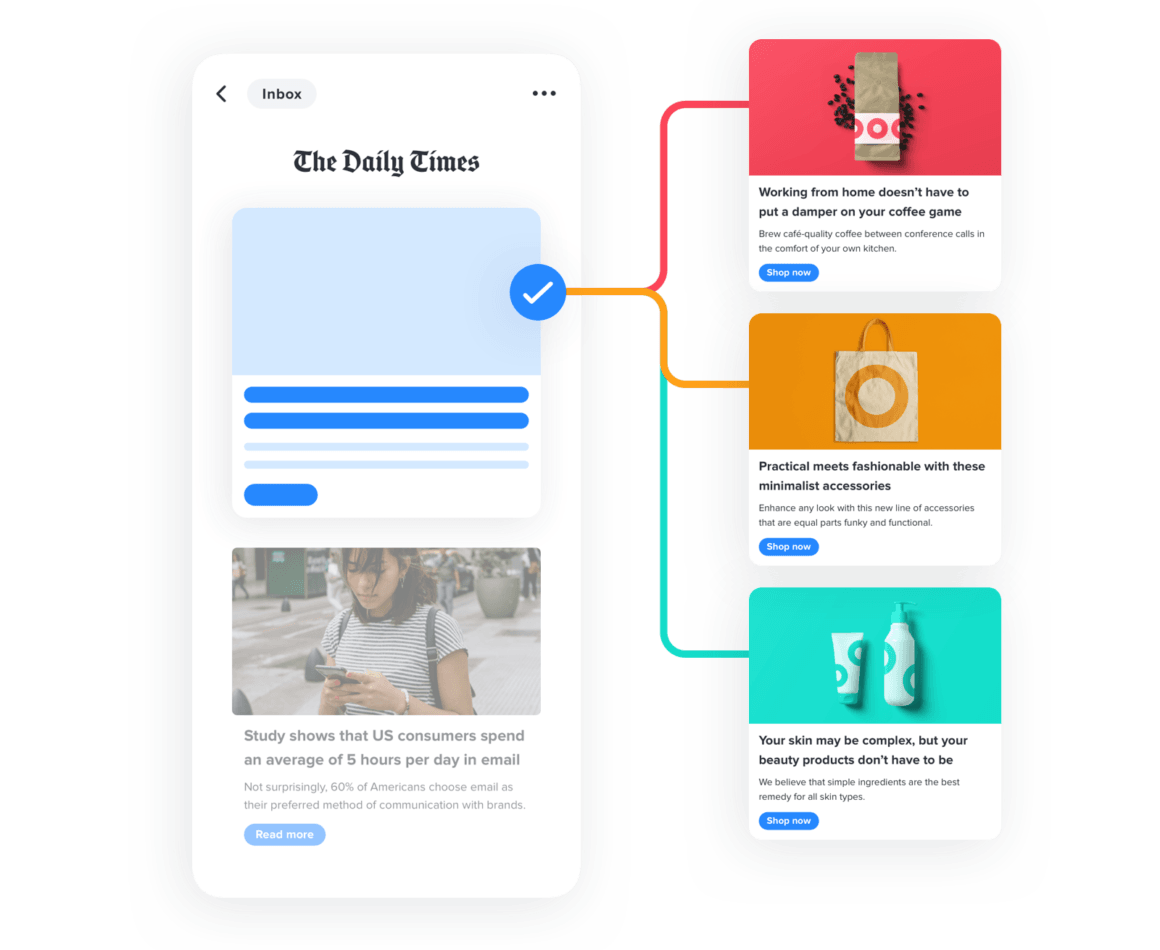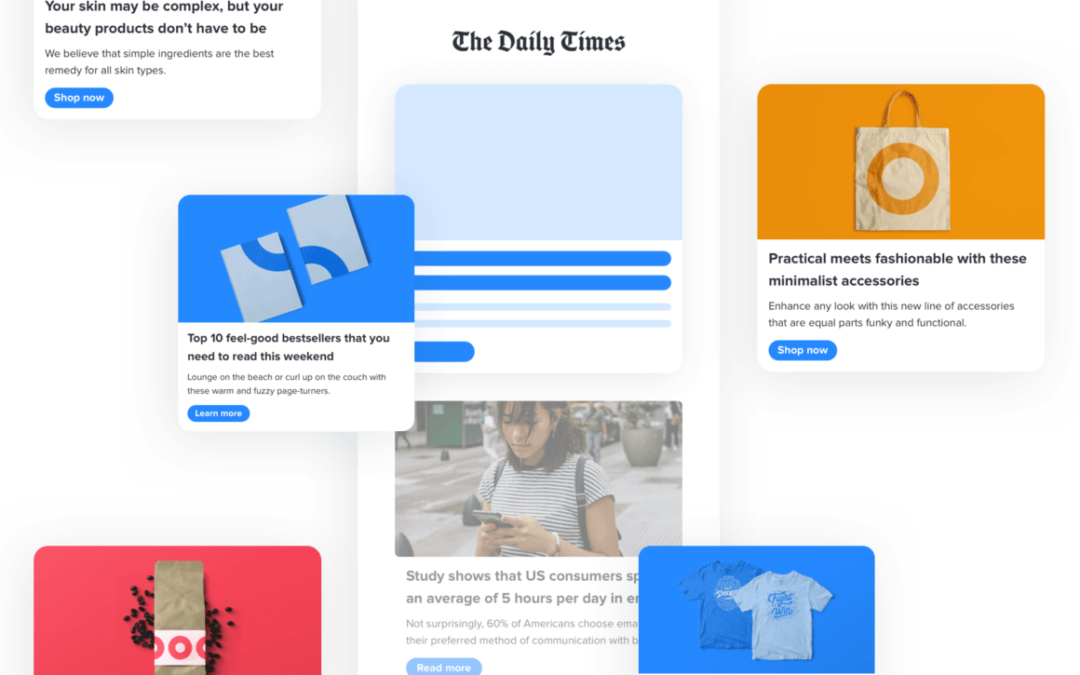
What are native ads?
Native ads are ads that match their environment or surroundings. Native ads are similar to an advertorial but come in a variety of formats. The three main types of native ad formats are branded content native ads, in-feed native ads, and content recommendation native ads.
Branded content native ads
Publishers will partner with an advertiser to create a unique piece of content on behalf of their brand, retaining the publication’s unique voice and tone. The publisher hosts and distributes the content on its website and newsletters. These mimic the look and feel of the content the publisher normally creates.
In-feed native ads:
In-feed native ads are ads that appear within a stream of content like article feeds (usually found on content sites or news aggregators), product feeds (typically found on a retailer, product, or service sites like Amazon or Best Buy), and social media feeds. These mimic the look and feel of the environment or platform.
Content Recommendation native ads:
These ads appear alongside other sponsored or editorial content. You can find them at the bottom of a page or along the side.
Why use native ads?
Native advertising is growing. In fact, the projected native display ad spend is $57.27 billion for 2021. So, why all the hype and investment in this creative format?
Native advertising provides both publishers and advertisers with a unique opportunity. With native ads, publishers can monetize their content while maintaining their brand’s look and feel, be it on their website, app, or in email newsletters. This format creates a better user experience for the shopper or reader, as the advertisements are less pronounced and don’t disrupt the browsing or shopping experience.

Native ads appeal to advertisers for similar reasons. A shopper or reader is more likely to engage with the ad as it more seamlessly integrates with the surrounding content than other advertising formats. That may sound counterintuitive, but it’s true. An unfortunate response to advertising is the development of banner blindness, a conscious or unconscious response by the user to ignore banner-like content or information. Native ads help alleviate banner blindness with a less pronounced and interruptive advertising experience.
Native ad guidelines
Let’s be clear; although native ads create a more seamless, less interruptive digital ad experience, they do not deceive shoppers and readers into clicking ads. The Interactive Advertising Bureau (IAB) has implemented guidelines and parameters to ensure that native ads uphold user trust and advertiser and publisher integrity. Those guidelines, per the IAB’s Native Advertising Playbook 2.0, are as follows:
“Regardless of the branded content advertising format, IAB advocates that, for paid branded content ad units, clarity and prominence of the disclosure is paramount.
This disclosure must:
- Use language that conveys the advertising has been paid for, thus making it an advertising unit, even if that unit does not contain traditional promotional advertising messages.
- Be large and visible enough for a consumer to notice it in the context of a given page and/or relative to the device that the ad is being viewed on.
Simply put: Regardless of the context, a reasonable consumer should be able to distinguish between what is paid advertising and what is publisher editorial content.”
How can I leverage native ads in email?
Until recently, native ads were limited to web, social, and in-app properties. However, innovative solutions have made way for native ads to step onto the email newsletter stage, like LiveIntent’s Native Ad Blueprints.
Native Ad Blueprints enables sellers of email newsletter ad inventory to activate native placements easily with a one-time tag placement. Once implemented, Native Ad Blueprints eliminates the need for manual HTML coding, saving teams hours of work.

Before activating inventory in your email newsletter, however, it’s important to consider the newsletter design and layout to ensure you’ll get the most out of it. Defining your newsletter’s look and feel first enables you to then decide how to approach your native ad units’ styling. The ad units themselves also have their own particularities, like required and recommended elements, that require your consideration as well.
Exploring new monetization channels can be daunting, but it doesn’t have to be. Sit down with other key stakeholders, assess your company’s goals and concerns, and talk to your prospective email monetization partners. The right monetization strategy and approach might only be a conversation away.
Want to learn more about Native Ad Blueprints? Read more on our Native Ad Blueprints solution page.
The post Everything you need to know about native ads in email newsletters appeared first on LiveIntent Blog.

